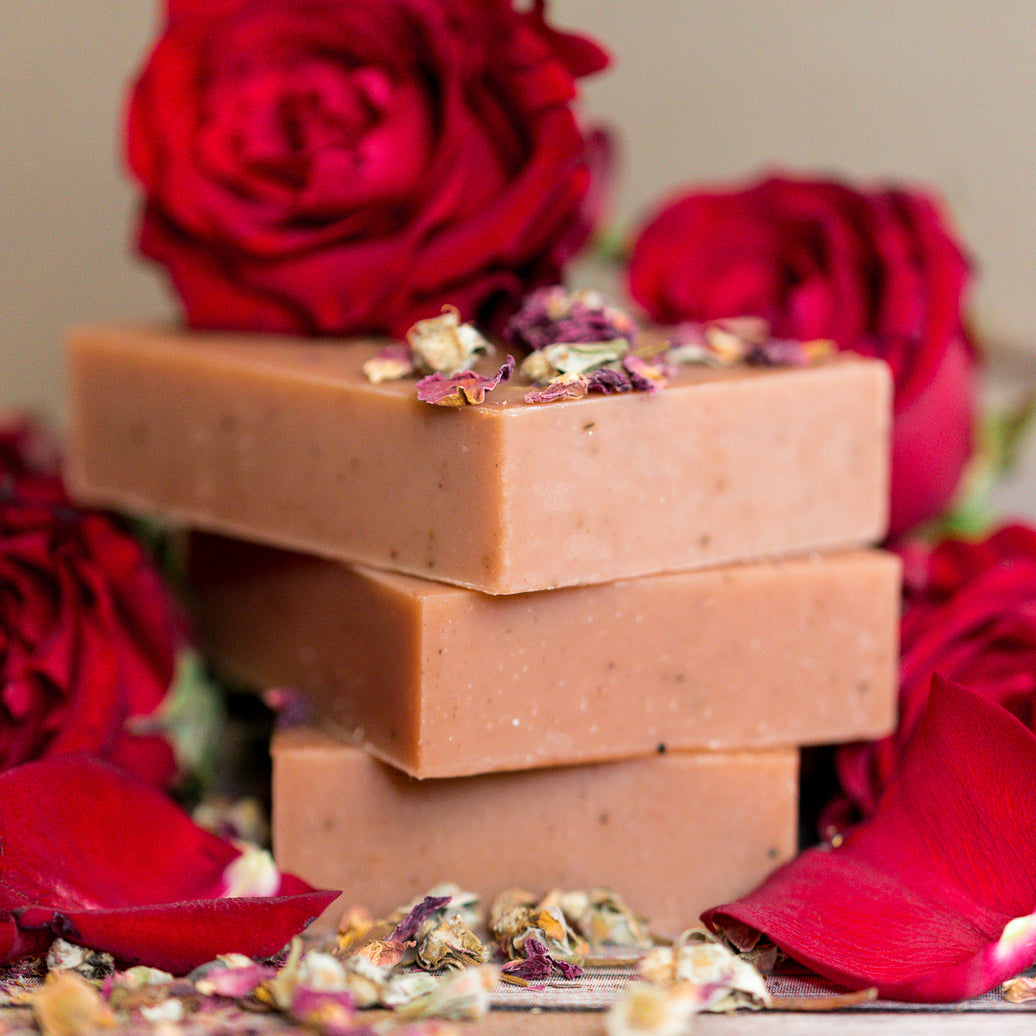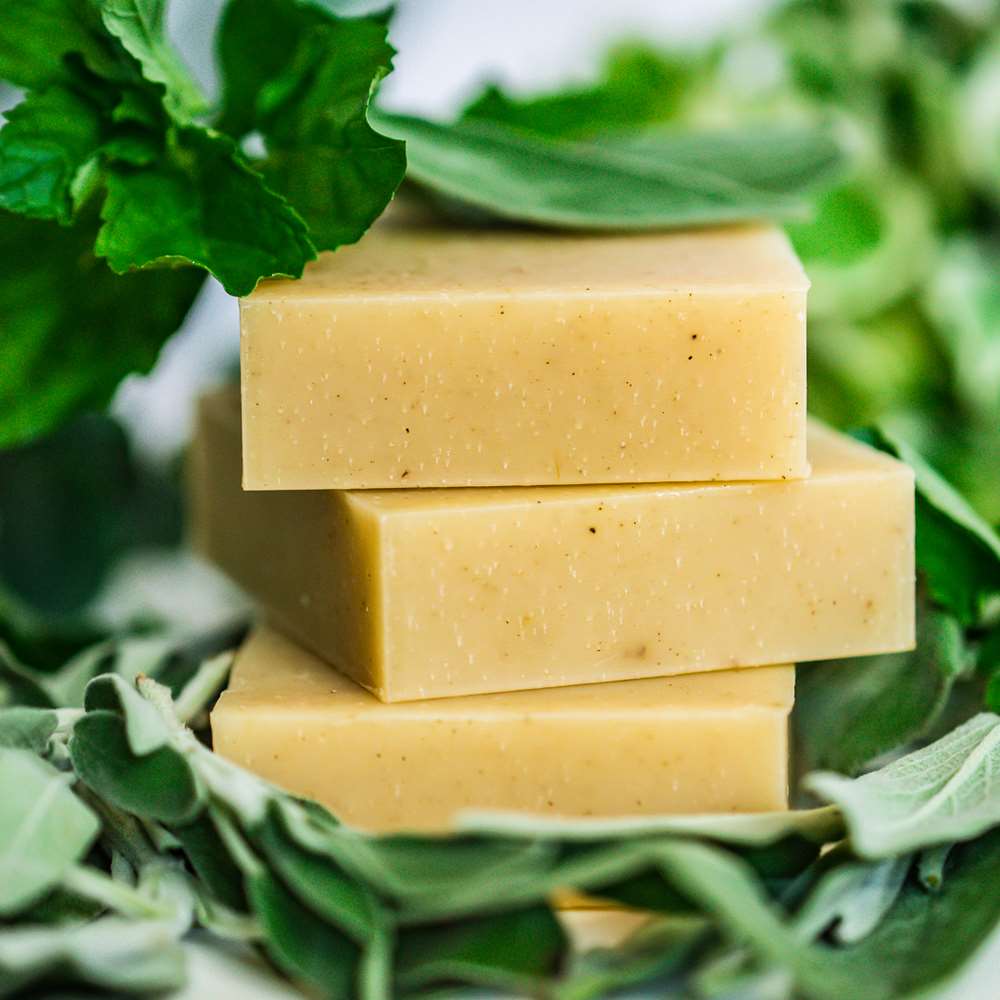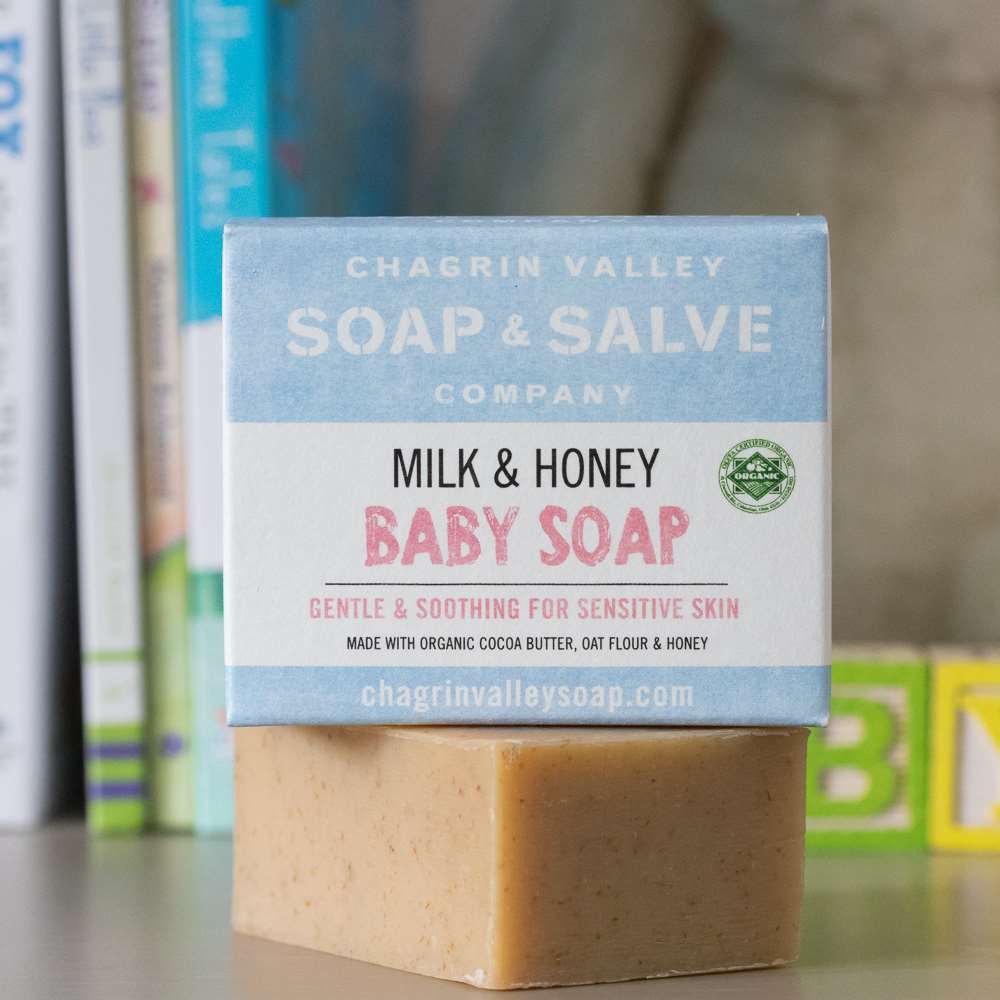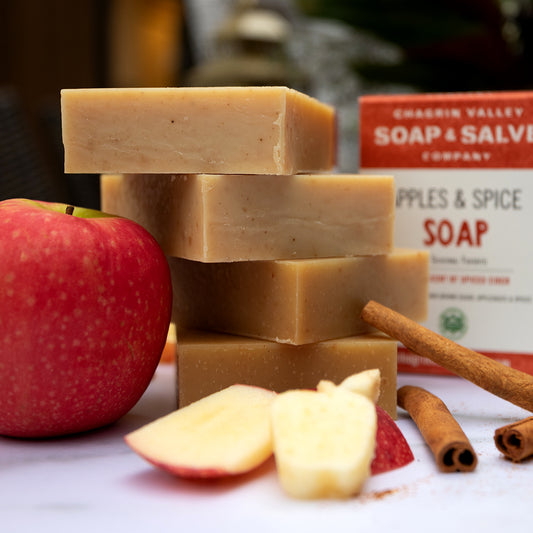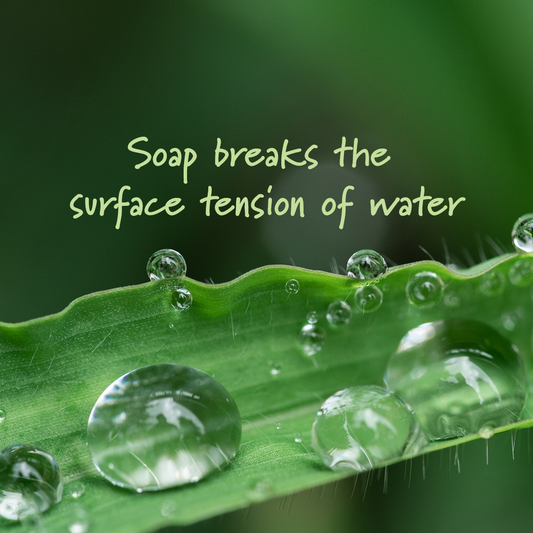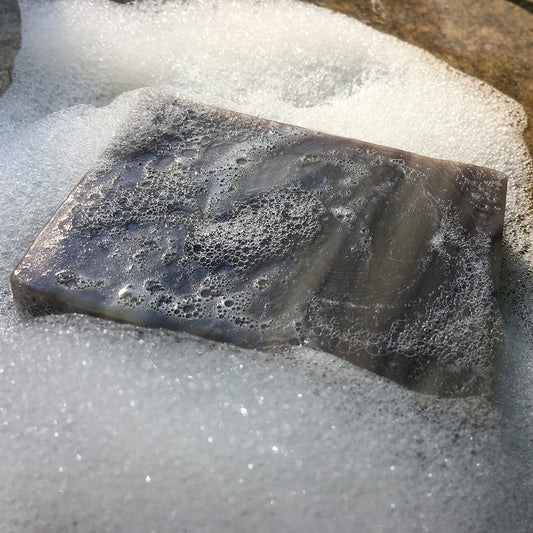The Origin and History of Soap
 No one really knows when soap was discovered, but there is a wonderful story surrounding its beginning.
No one really knows when soap was discovered, but there is a wonderful story surrounding its beginning.
According to Roman legend, soap was named after Mount Sapo, an ancient site of animal sacrifices.
After an animal sacrifice, rain would wash animal fat and ash, that collected under the ceremonial altars, down to the banks of the Tiber River.
Women washing clothes in the river noticed that if they washed their clothes in certain sudsy parts of the river after a heavy rainfall their clothes were much cleaner. Thus the emergence of the first soap – or at least the first use of soap as the legend goes.
Although this explanation seems possible, evidence of the legendary Mt. Sapo, which was supposed to exist somewhere near Rome, has never been found.
Soap in the Early Years
The word "sapo" first appears in a book written in Latin titled "Natural History" by Pliny the Elder an academic from Pompeii. It was like an early set of encyclopedias of the ancient world, written around 77 AD. In book 28, chapter 51, Pliny writes:
There is also soap (sapo), an invention of the Gauls for making their hair shiny. It is made from tallow and ashes, the best from beechwood ash and goat fat, and exists in two forms, solid and liquid; among the Germans, both are used more by men than by women.
The earliest known written soap recipe was written on clay tablets and is credited to the ancient Babylonians. A soap-like material found in clay cylinders during the excavation of Babylon a city in ancient Mesopotamia, between the Tigris and Euphrates rivers, is evidence that soapmaking was known as early as 2800 B.C. Inscriptions on the cylinders indicate that fats (rendered from a slaughtered cow, sheep, or goat) were boiled with wood ashes and water.
 An Egyptian scroll called the Ebers Papyrus dated 1550 BC indicates that ancient Egyptians bathed in a combination of animal and vegetable oils mixed with wood ash, which would have created a soap-like material that was used for treating skin diseases, as well as for washing. It is well documented that Egyptians regularly bathed.
An Egyptian scroll called the Ebers Papyrus dated 1550 BC indicates that ancient Egyptians bathed in a combination of animal and vegetable oils mixed with wood ash, which would have created a soap-like material that was used for treating skin diseases, as well as for washing. It is well documented that Egyptians regularly bathed.
Moses gave the Israelites detailed laws governing personal cleanliness. Biblical accounts suggest that the Israelites knew that mixing ashes and oil produced a kind of gel that could be used on hair. Soap is mentioned twice in the Bible, but it is generally agreed that the Hebrew word “borith,” which has been translated as soap, is a generic term for any cleansing agent made from wood or vegetable ashes.
Soap became hugely popular throughout the Roman Empire, around 100 BC to 400 AD. When the ruins of Pompeii were excavated, an entire soap factory was discovered in the rubble.
Bathing habits all over Europe rose and declined with Roman civilization. When Rome fell in 467 A.D., so did bathing. It is believed that the lack of cleanliness and poor living conditions contributed to the many plagues of the Middle Ages.
There were areas of the medieval world where personal cleanliness remained important. Daily bathing was a common custom in Japan during the Middle Ages in Europe. In Iceland, pools from hot springs were popular gathering places.
By the second century A.D., the Greek physician, Galen, recommended soap for both medicinal and cleansing purposes.
Soap in the 17th and 18th Centuries
Not until the seventh century did soapmakers appear in Spain and Italy where soap was made with goat fat and Beech tree ashes. During the same period, the French started using olive oil to make soap. Marseille soap has been made in the south of France for more than six centuries.
The recipe was first officially recognized in 1688 during the reign of Louis XIV, the “Sun King." Eventually, fragrances were introduced and specialized soaps for bathing, shaving, shampooing, and laundry began to appear. There is a story that King Louis XIV of France executed three soapmakers for making a bar that irritated his very sensitive Royal skin.
While the English began making soap during the 12th century, in 1633 King Charles I granted a 14-year monopoly to the Society of Soapmakers of Westminster.
 According to Alison Sim, in her book “The Tudor Housewife,” wealthy ladies of the Tudor period (1485-1603) used scented toilet soap or ‘Castile soap’ for their daily washing. This soap, made with olive oil and imported, was very expensive. A household instruction manual written during this period included recipes for soap which suggests that people of all levels of society were interested in personal hygiene.
According to Alison Sim, in her book “The Tudor Housewife,” wealthy ladies of the Tudor period (1485-1603) used scented toilet soap or ‘Castile soap’ for their daily washing. This soap, made with olive oil and imported, was very expensive. A household instruction manual written during this period included recipes for soap which suggests that people of all levels of society were interested in personal hygiene.
During the reign of Elizabeth I, soap consumption in England was greater than in any other European country. It seems that Queen Bess set the fashion herself, for it was reported that the Queen took a bath every four weeks "whether it was necessary or not."
In the 17th and 18th centuries, just as the soap industry was gaining momentum in England, it became the subject of a series of restrictions and crippling taxation on soap. Eventually, the Victorian Era came around, and with it, a new interest in personal hygiene. It was not until 1853 that Gladstone abolished the tax on soap allowing soap to be available and affordable to more people.
Two discoveries by French chemists helped elevate the progress of commercial soap making. In 1791, the French chemist Nicolas Leblanc discovered a process for transforming common salt (sodium chloride) into an alkali called soda ash. Since alkali was critical in the manufacture of soap as well as other products, this discovery became one of the most important chemical processes of the nineteenth century. In 1811, Chevreul discovered the chemistry behind the relationship of glycerin to fatty acids. With the advent of the industrial revolution, the stage was now set for mass soap production.
Soap in the 19th Century
In the 19th century, Louis Pasteur proclaimed that good personal hygiene would reduce the spread of diseases which helped increase the demand for soap.
In the United States, by the beginning of the 19th century, soap-making was one of the fastest-growing industries. Rural Americans made homemade soap using a process developed during Colonial times. They would save ashes from their fires for months. When they had enough fat leftover from butchering hogs they would make soap. (Picture of Pioneer Courtesy of Sam Lattuca/Williamson County Historical Society)
 Old-fashioned lye was made using hardwood ashes, a barrel or ash hopper, and rainwater. Holes were drilled in the bottom of a barrel. The barrel was placed on a grooved stone slab that rested on a pile of rocks. A layer of gravel was placed over the holes. Then a layer of straw, twigs, and sticks was placed on top of the gravel as a filter to prevent the ashes from getting into the solution.
Old-fashioned lye was made using hardwood ashes, a barrel or ash hopper, and rainwater. Holes were drilled in the bottom of a barrel. The barrel was placed on a grooved stone slab that rested on a pile of rocks. A layer of gravel was placed over the holes. Then a layer of straw, twigs, and sticks was placed on top of the gravel as a filter to prevent the ashes from getting into the solution.
After filling a barrel with hardwood ashes, rainwater was poured through the ashes to leach out the brown lye liquid which would flow into the groove around the stone slab and drip down into a container.
Some soapmakers used an ash hopper for making lye instead of the barrel method. Using the same basic process, the lye dripped into a container located underneath the hopper.
The most difficult part of early soapmaking was determining if the lye was the correct strength. The “lye water” was considered the proper strength to make soap when an egg or small potato placed in the solution floated about halfway beneath the surface of the solution. If the egg or potato floated on top, the lye was too strong. If it sank quickly, the lye was too weak. Some early soapmakers used goose or chicken feathers to test their lye. If a feather inserted in the lye water began to dissolve in it, then the lye water was at the right strength.
Modern Day Soap
During World War I, commercial soap, as we know it today, came into existence. The injuries of war brought an increased need for cleaning agents. However, at the same time, the ingredients needed to make soap were scarce. German scientists created a new form of "soap" made with various synthetic compounds and as a result, detergents were born. By the 1950′s, detergent sales had surpassed soap sales in the United States.
Most commercial "soaps" available today are actually detergents, which are made with petroleum by-products. Since these "soaps" are detergents, by law they cannot be called soap. Chances are that when you see a soap called a "body bar," it is not soap at all.
After the Great War and until the 1930s, soap was made by a method called batch kettle boiling. Commercial soap makers had huge three-story kettles that produced thousands of pounds of soap over the course of about a week. Shortly thereafter, an invention called the continuous process was introduced and refined by Procter & Gamble. This process decreased soap-making production time to less than a day. Large commercial soap manufacturers still use the continuous process.
Commercial soap manufacturers also learned that they could remove the natural glycerin in soap which gives it moisturizing properties. They sell it or use it in other higher-priced products like the moisturizers and creams you need when their soap dries out your skin. Removing the natural glycerin also extends the shelf life of the soap so that it can sit in the storehouse or on store shelves for many years.
 Today there is a heightened awareness of the possible adverse effects of many of the synthetic additives and chemicals in commercial soap. Educated consumers are turning to natural soaps like ours. Even large companies are starting to advertise "natural ingredients" in their products.
Today there is a heightened awareness of the possible adverse effects of many of the synthetic additives and chemicals in commercial soap. Educated consumers are turning to natural soaps like ours. Even large companies are starting to advertise "natural ingredients" in their products.
But Beware! The addition of one or two natural ingredients does not make a product "all-natural.” It is virtually impossible for large companies to create natural, handmade soaps.
Chagrin Valley Handcrafted Natural Soaps are made in small batches with natural and certified organic ingredients.
While Great Grandma used a raw egg to determine the amount of lye needed, we work with specialized charts and computer programs to determine the correct proportions of ingredients to use in the soap-making process. In addition, we use accurate scales that allow us to measure ingredients by a tenth of an ounce. The result is mild and carefully crafted handmade natural soap.
Click here to learn "How We Make Soap At Chagrin Valley"
Now that you know the full story, browse our full range of organic soaps.
